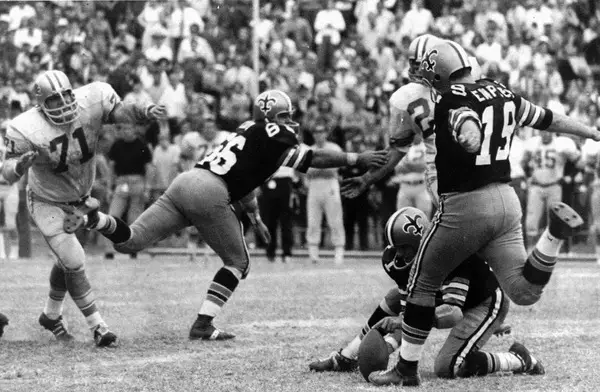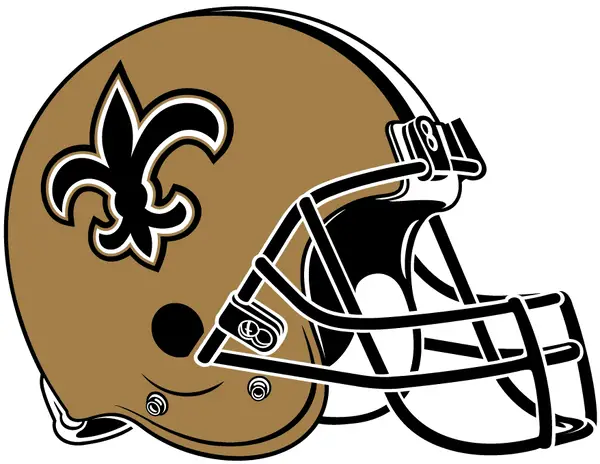Announced on All Saint’s Day, November 1966, the New Orleans Saints became the 16th National Football League (NFL) franchise. John W. Mecom Jr. paid $8.5 million to enter the league.
The New Orleans Saints got their name through a fan contest run through a local newspaper, The Times-Picayune. According to Mecom Jr., the name and color scheme fits in with New Orleans’ annual Mardi Gras festivities and the city’s jazz heritage. Popular musician Al Hirt, a member of the initial ownership group, helped promote the team with his rendition of “When the Saints Come Marching In.” with special events called “Mardi Gras in Autumn.” Optimism for the team was high, as over 33,000 season tickets for the first season.
The New Orleans Saints first regular season was against the Los Angeles Rams before over 80,000 fans in Tulane Stadium. John Gilliam returned the opening kickoff for a 94-yard touchdown, even though the team lost 27-13. The Saints finished 3-11 that year. It would take the franchise two full decades before finally having their first winning season in 1987.
Explaining the Black and Gold color scheme
While there seem to be several stories surrounding the reason of the black and gold team color scheme, the predominate one seems to correlate to Mecom Jr.’s version as well as the region’s background in the oil industry.
Since 1975, the team plays its home games at Caesars Superdome, after using Tulane Stadium during its first eight seasons. Tulane Stadium, officially the Third Tulane Stadium, stood from 1926 to 1980. The Sugar Bowl, a collegiate post-season game formerly played at Tulane Stadium, now takes place at the Superdome, known as Mercedes-Benz Superdome from 2011 – 2021 and the Louisiana Superdome from 1975 until 2011.
Early key players included kicker Tom Dempsey, who kicked a then-record 63-yard field goal in 1970 to help the Saints defeat the Detroit Lions 19-17 as time expired. Dempsey who was born without toes on his kicking foot, made the Pro Bowl in 1969. Quarterback Archie Manning, a local college standout at Ole Miss joined the team in 1971 and played for the team until 1982. Today fans may know Manning moe as the father of former professional quarterbacks Peyton and Eli Manning rather than for his own exploits on the field. Running back George Rogers joined the team in 1981 and rushed for over 1,600 yards his first season. He earned NFL Offensive Rookie of the Year award that year. Other key players of that era included Pro Football Hall of Fame linebacker Rickey Jackson and placekicker Morten Andersen.

New Orleans Saints
Tom Benson purchased the New Orleans Saints in 1985 for around $70 million. He hired Jim Fink as the General Manager and Jim Mora as the head coach. The team immediately had success, and started making the playoffs.
In 2005 the Saints played home games in San Antonio following Hurricane Katrina. During that time span, the Superdome housed more than 20,000 people seeking shelter after the devastation from the storm.
Super Bowl victory
In 2006 Sean Payton took over as head coach. Four years later, with Drew Brees at quarterback, the team won their first championship in franchise history, when they defeated the heavily favored Indianapolis Colts in Super Bowl XLIV.
Gayle Benson, widow of Tom Benson who passed away in 2018, currently owns the team.
The New Orleans Saints currently play in the National Football League (NFL) South division along with the Atlanta Falcons, Carolina Panthers and Tampa Bay Buccaneers.
Barry Schustermann
Follow me on X @BarrySchust
Follow me on Facebook @Barry Schustermann



